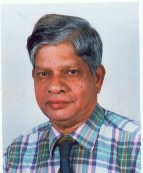Friday, July 01, 2011
Alloys Earn Kyoto Prizes
Observations: Cosmic Microwaves and Alloys Earn Kyoto Prizes: "The Inamori Foundation announced this year's Kyoto Prizes on June 24." The Advanced Technology prize went to materials scientist John W. Cahn of the U.S. National Institute of Standards and Technology.Cahn earned the Advanced Technology prize through his work on alloys. One of his theories allowed engineers to craft alloys with specific characteristics, such as strength and heat resistance, to best fit them for precise functions. In addition, he helped develop the Cahn-Hilliard equation, which describes the phase separation of a wide variety of materials, from water to galaxies. Every year, the Inamori Foundation awards the Kyoto Prizes to those around the world who have made "significant contributions to the betterment of society."
Tin additions improve corrosion resistance of steel in salt-containing environments
Tin additions improve corrosion resistance of steel in salt-containing environments: "Sumitomo Metal Industries Ltd., Japan, has developed a new corrosion-resistant steel that can be used for bridges in salt-containing environments such as the seaside, or in cold climates where anti-freezing agents are sprayed. The new steel has tin additions that improve corrosion resistance, and is expected to lengthen the intervals between repaints and reduce the repainting workload for such bridges.
"
"
Sunday, June 19, 2011
Making complex composite materials to order
Making complex composite materials to order: "ScienceDaily (May 30, 2011) — A team of researchers at MIT has found a way to make complex composite materials whose attributes can be fine-tuned to give various desirable combinations of properties such as stiffness, strength, resistance to impacts and energy dissipation." The key feature of the new composites is a "co-continuous" structure of two different materials with very different properties, creating a material combining aspects of both. The co-continuous structure means that the two interleaved materials each form a kind of three-dimensional lattice whose pieces are fully connected to each other from side to side, front to back, and top to bottom.
New way to make lighter, stronger steel -- in a flash
New way to make lighter, stronger steel -- in a flash: "ScienceDaily (June 10, 2011) — A Detroit entrepreneur surprised university engineers in Ohio recently, when he invented a heat-treatment that makes steel 7 percent stronger than any steel on record -- in less than 10 seconds.
In fact, the steel, now trademarked as Flash Bainite, has tested stronger and more shock-absorbing than the most common titanium alloys used by industry.
Now the entrepreneur is working with researchers at Ohio State University to better understand the science behind the new treatment, called flash processing.
In fact, the steel, now trademarked as Flash Bainite, has tested stronger and more shock-absorbing than the most common titanium alloys used by industry.
Now the entrepreneur is working with researchers at Ohio State University to better understand the science behind the new treatment, called flash processing.
Metallic glass: A crystal at heart
Metallic glass: A crystal at heart: "ScienceDaily (June 16, 2011) — Glass, by definition, is amorphous; its atoms lack order and are arranged every which way. But when scientists squeezed tiny samples of a metallic glass under high pressure, they got a surprise: The atoms lined up in a regular pattern to form a single crystal."
Sunday, March 27, 2011
Rapid etching X-rayed: Physicists unveil processes during fast chemical dissolution
Rapid etching X-rayed: Physicists unveil processes during fast chemical dissolution: "ScienceDaily (Mar. 24, 2011) — A breakthrough in the study of chemical reactions during etching and coating of materials was achieved by a research group headed by Kiel physicist, Professor Olaf Magnussen. The team from the Christian-Albrechts-Universität zu Kiel (CAU), Germany, in collaboration with staff from the European Synchrotron Radiation Facility (ESRF) in Grenoble, France, have uncovered for the first time just what happens in manufacturing processes, used for the formation of metal contacts thinner than a human hair in modern consumer electronics, such as flat-screen television."
Sunday, February 20, 2011
Aluminum to replace copper as a conductor in on-board power systems
Aluminum to replace copper as a conductor in on-board power systems ScienceDaily (Feb. 7, 2011) — Electric power and electronics are playing an ever-increasing role in all kinds of vehicles. Currently copper is the conductive material of choice. But in comparison to aluminum copper is heavy and expensive. In particular for fully electric vehicles the switch to the cheaper and lighter aluminum would be an interesting option. That is why the optimization of intricate power supply networks is now in the focus of engineering research. Scientists from the Technische Universitaet Muenchen (TUM), in collaboration with BMW engineers, have now found out what tricks make it possible to replace copper with aluminum.
Sunday, January 16, 2011
New glass stronger and tougher than steel
New glass stronger and tougher than steel: "ScienceDaily (Jan. 11, 2011) — Glass stronger and tougher than steel? A new type of damage-tolerant metallic glass, demonstrating a strength and toughness beyond that of any known material, has been developed and tested by a collaboration of researchers with the U.S. Department of Energy (DOE)'s Lawrence Berkeley National Laboratory (Berkeley Lab)and the California Institute of Technology. What's more, even better versions of this new glass may be on the way."
When metals reach end of life: Researcher develops new method
When metals reach end of life: Researcher develops new method: "LSU's Michael Khonsari has developed and proven a novel method to avoid the danger that comes with reaching the breaking point."
Subscribe to:
Comments (Atom)


